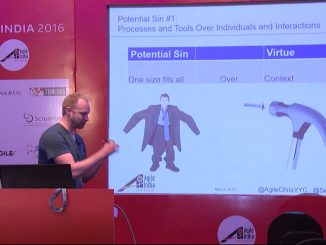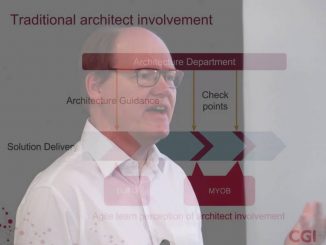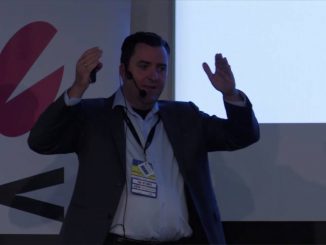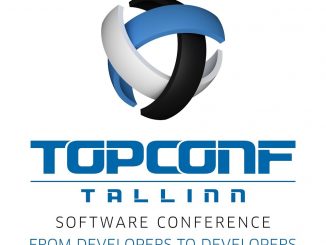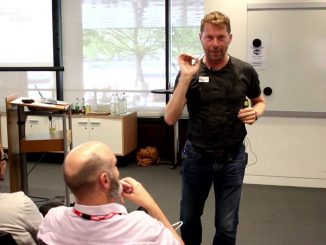Videos on Scrum and Agile Project Management
This is about agile “anti-patterns”: “something that looks like a good idea, but which backfires badly when applied” (Coplien). The presenter has been around Agile development from before it was called Agile. In that time, he has seen teams fall into the trap of many of these anti-patterns, becoming stuck without ever realizing it.
In the Agile world, software architecture is about making design decisions with just enough anticipation. Too much anticipation leads to overly heavy architectural constructs that may never be used (YAGNI); too little anticipation leads to expensive refactoring and potentially fatal build-up of technical debt. This session presents an approach for Agile architecture roadmapping with just enough anticipation.
Learn how to succeed with large scale Agile. Implementing Agile in small, short lived projects is easy. The real challenge comes when the project becomes long-running, and it gets even harder when spanning into multiple large projects. Add the challenge of distribution of resources and different cultures and it becomes almost impossible.
Learn which building blocks help you to create the culture of systematic improvement in a software development organization and a Scrum team. This talk discusses how the Deming cycle – Plan-Do-Check-Act has been applied concretely in an R&D organization to ensure that the operational development is done systematically. The practices have been evolving during couple of years and the talk will also share the lessons learned from this journey.
Lear how to use the Theory of Constraints to scale Agile and Scrum development teams. The Theory of Constraints is a methodology for identifying the most important limiting factor (i.e. constraint) that stands in the way of achieving a goal and then systematically improving that constraint until it is no longer the limiting factor. While implementing Scrum and shortening Time To Market in large financial institution we were slowed down because of obstacles in planning and analysis. I came with the idea to use Theory of Constraints which helped us to calculate real TTM and gave us hints how to release faster and cheaper. Now they’re ready to change direction anytime and do releases more often. This presentation is suitable for people in organizations trying to lower workload of releases. Video producer: http://swanseacon.co.uk/
With Agile practices becoming more and more common, the call for Product Leadership has never been louder. Product owners are drowning in feature alignment and internal stakeholder discussions, slowed by technical and organizational complexity, crippled by a risk-averse company culture and focused on internal risks rather than market outcome. Long ago the Samurai learned that Agility in itself is not enough. Leadership comes from an unwavering vision, clear values and relentless exercise of martial practices (kata).
“Agile has become overly decorated. Let’s scrape away those decorations for a minute, and get back to the center of Agile.” The Heart of Agile is a fresh look at Agile that strips away a lot of the cruft that has built up over recent years. Collaborate, Deliver, Reflect, Improve. Alistair Cockburn goes over the addition of kokoro onto the shu-ha-ri sequence, and its implications for agile.


